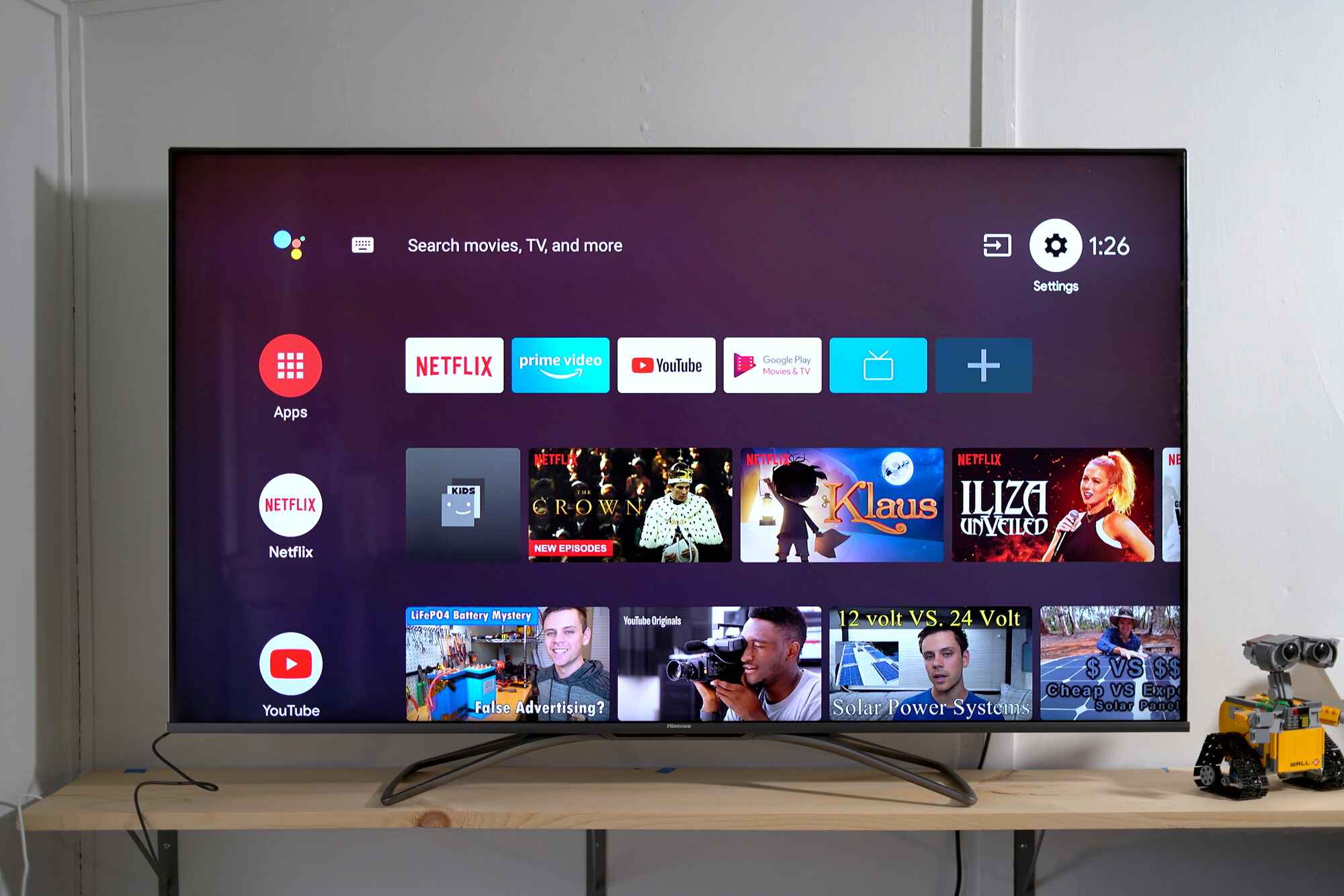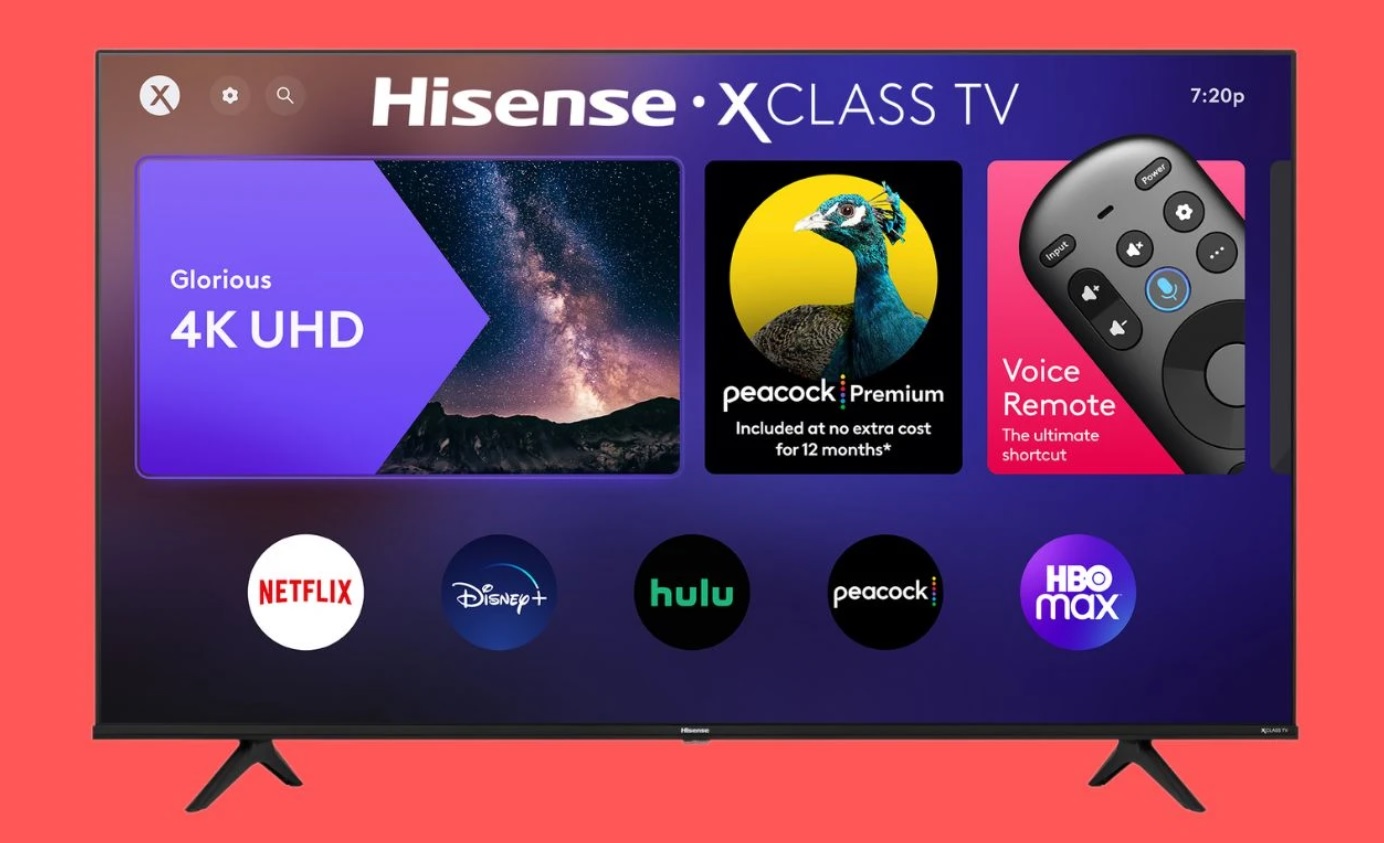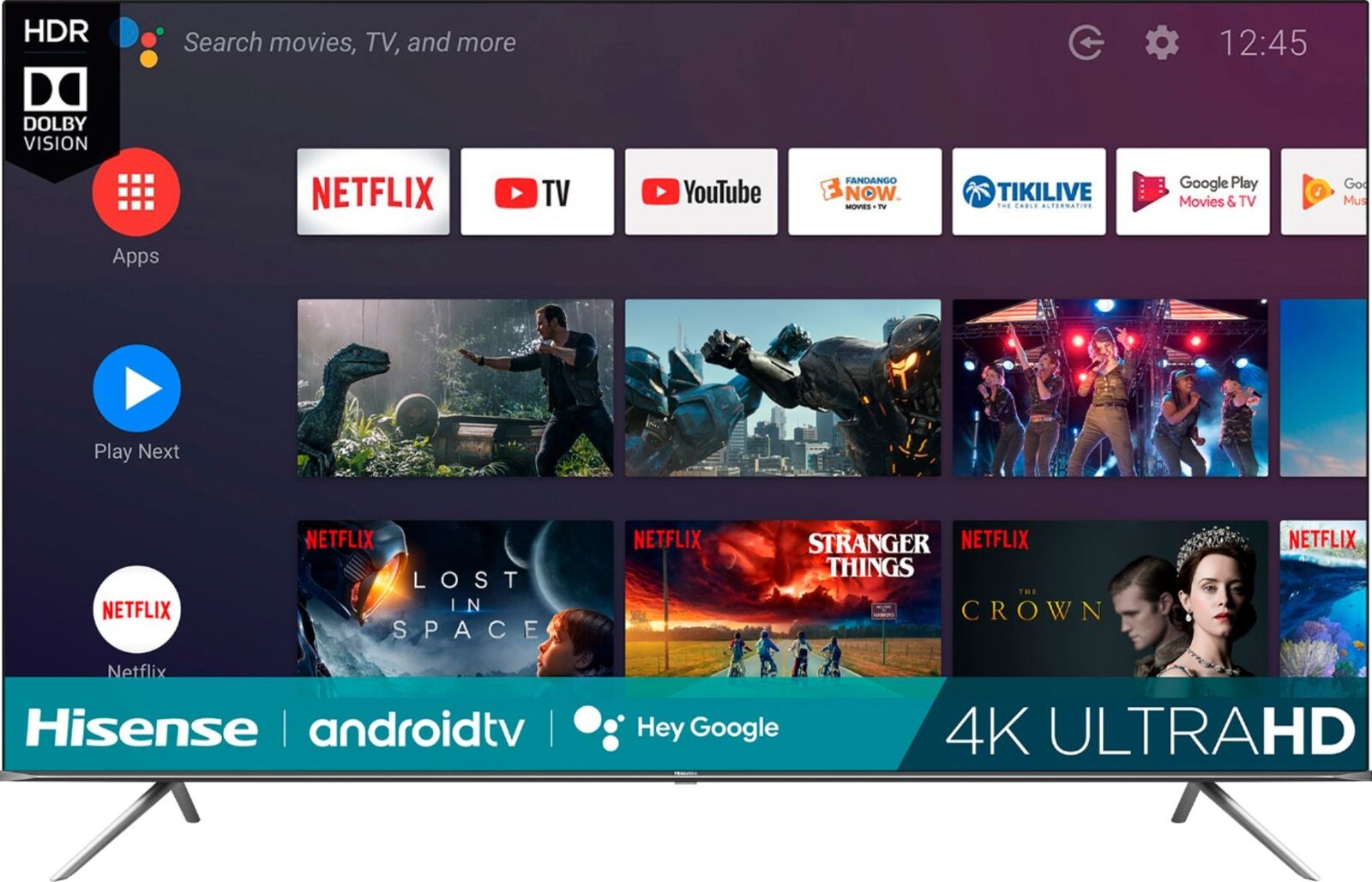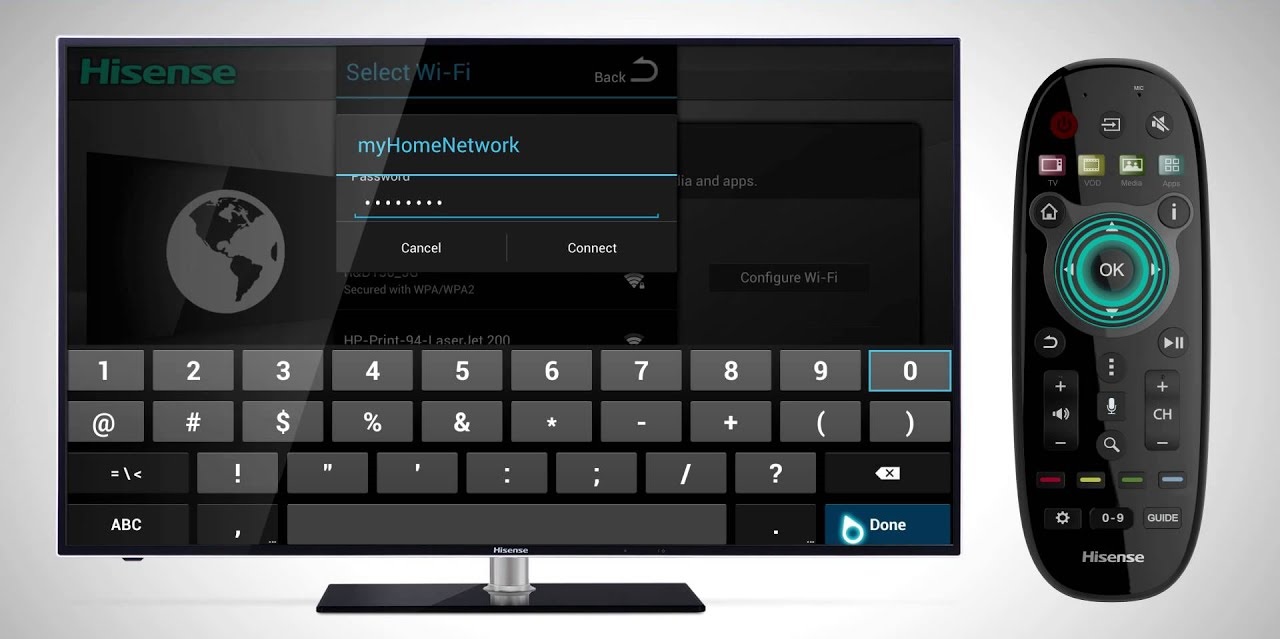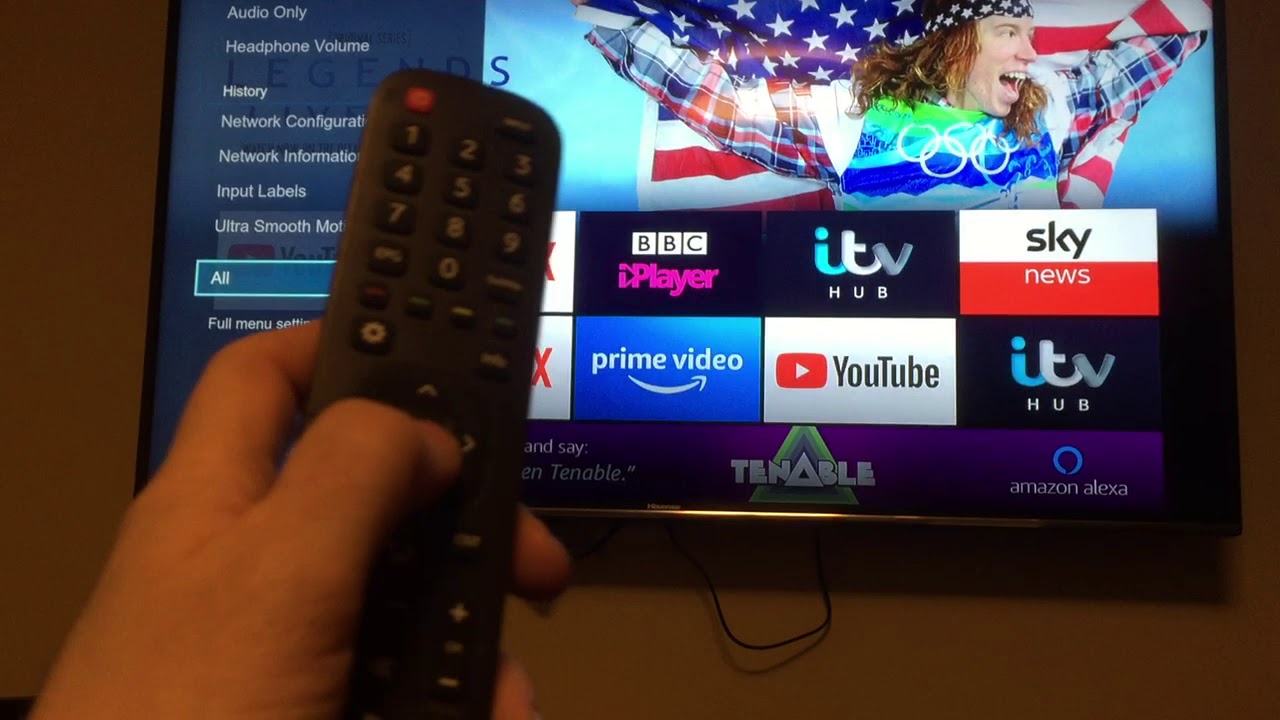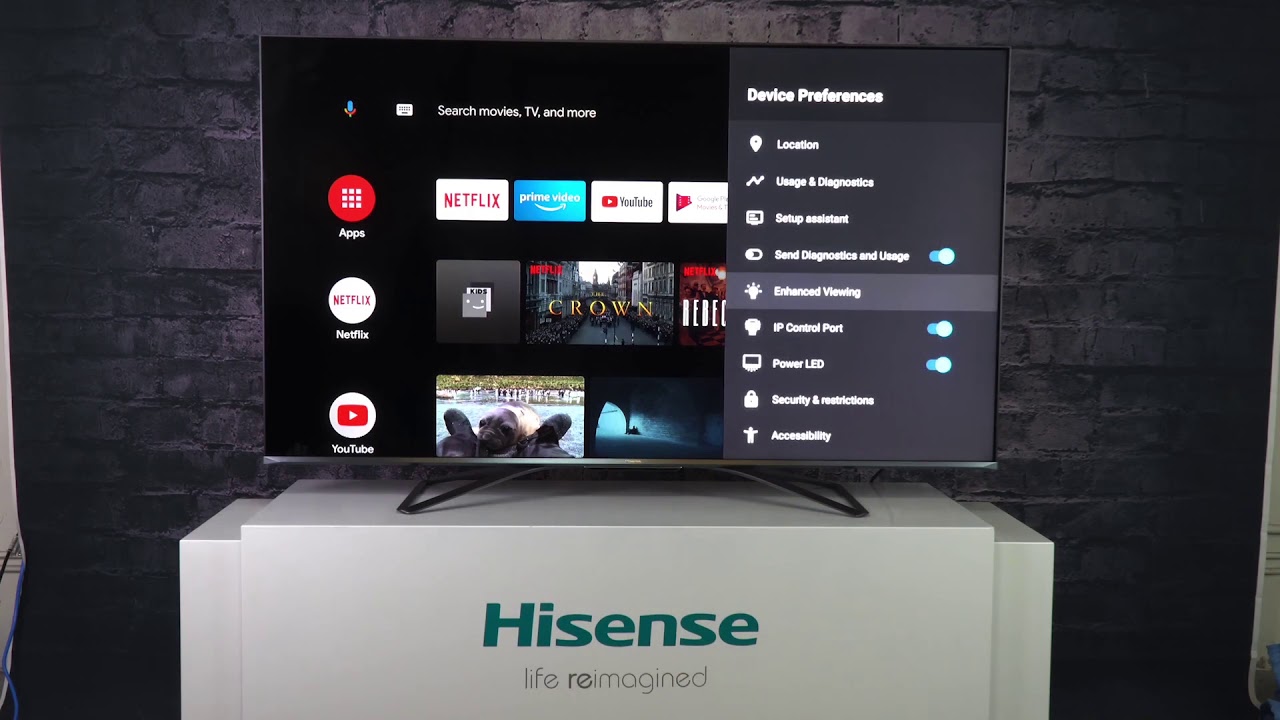Introduction
Welcome to this guide on how to connect to your Hisense Smart TV! Hisense Smart TVs offer a world of entertainment, allowing you to stream your favorite shows and movies, browse the web, and even connect your devices for a more immersive experience. Whether you’re a tech-savvy user or new to the world of smart TVs, this step-by-step tutorial will walk you through the process of connecting various devices to your Hisense Smart TV.
Connecting your Hisense Smart TV opens up a world of possibilities. With a stable internet connection, you can access a wide range of streaming services like Netflix, Hulu, and YouTube, making movie nights with family and friends more enjoyable than ever before. Additionally, you can connect your smartphones, tablets, and laptops to your Hisense Smart TV, allowing you to share photos, videos, and even play games on a larger screen.
In this guide, we will cover the essential steps to connect your Hisense Smart TV to Wi-Fi, connect external devices such as gaming consoles or Blu-ray players, utilize screen mirroring, and enhance your audio experience by connecting a soundbar or external speakers. So, whether you’re looking to binge-watch your favorite series or enjoy a gaming session with friends, this guide has got you covered!
Throughout this tutorial, we will provide clear, step-by-step instructions, accompanied by helpful tips and troubleshooting advice. So put on your tech-savvy hat, grab your remote control, and let’s get started on connecting your Hisense Smart TV to a world of entertainment!
Step 1: Check the Requirements for Connecting to the Hisense Smart TV
Before diving into the process of connecting your devices to the Hisense Smart TV, it’s essential to ensure that you have all the necessary requirements in place. Checking these requirements beforehand will help smoothen the setup process and prevent any potential issues.
The first requirement is a stable internet connection. The Hisense Smart TV relies on an internet connection to provide access to streaming services, online content, and software updates. Make sure you have a broadband or Wi-Fi connection available for your Hisense Smart TV.
Next, check if your Hisense Smart TV has built-in Wi-Fi capability. Most Hisense Smart TVs come with Wi-Fi capabilities, but it’s always good to double-check. If your TV doesn’t have built-in Wi-Fi, you can use an Ethernet cable to connect to your home network.
It’s also important to note the types of ports available on your Hisense Smart TV. Take a look at the back or side of the TV and identify the HDMI ports, USB ports, and any other relevant ports. These ports will be useful when connecting external devices such as gaming consoles, Blu-ray players, or soundbars.
Furthermore, ensure that your devices are compatible with the Hisense Smart TV. If you plan to connect smartphones, tablets, or laptops, check if they have the necessary features like screen mirroring or HDMI output. Some devices may require additional adapters or cables to establish a connection.
Last but not least, make sure you have the required remote control for your Hisense Smart TV. The remote control allows you to navigate through the TV’s settings, change channels, adjust volume, and access Smart TV features. If you have misplaced or damaged your remote control, consider obtaining a replacement from the manufacturer or using a compatible universal remote.
By checking these requirements before starting the setup process, you can avoid any unnecessary delays or complications. With everything in place, you are now ready to proceed with connecting your Hisense Smart TV to the internet and other devices.
Step 2: Connect the Hisense Smart TV to Wi-Fi
Connecting your Hisense Smart TV to Wi-Fi is a crucial step as it enables you to access streaming services and online content. Follow the steps below to connect your Hisense Smart TV to Wi-Fi:
- With your Hisense Smart TV turned on, using the remote control, navigate to the Settings menu. You can usually find the Settings icon represented by a gear or a cogwheel.
- In the Settings menu, locate the Network option and select it.
- Choose the Wireless (Wi-Fi) option to set up a wireless connection.
- A list of available Wi-Fi networks will appear on the screen. Select your Wi-Fi network from the list.
- If your network is password-protected, you will be prompted to enter the Wi-Fi password. Use the on-screen keyboard to enter the password correctly. Pay close attention to capitalization and any special characters.
- After entering the password, select the Connect or OK button to establish the Wi-Fi connection.
Once the connection is established, your Hisense Smart TV will display a confirmation message, indicating a successful Wi-Fi connection. You can now enjoy the benefits of a connected TV, such as streaming your favorite shows, browsing the internet, and accessing online apps.
If you encounter any issues during the Wi-Fi setup process, here are a few troubleshooting tips:
- Ensure that your Wi-Fi router is functioning correctly and broadcasting a stable internet connection.
- Double-check the Wi-Fi password to ensure that it is entered correctly.
- If your Hisense Smart TV doesn’t detect your Wi-Fi network, try restarting both the TV and the router.
- Consider moving the Hisense Smart TV closer to the router to improve the Wi-Fi signal strength.
- If you continue to experience connectivity issues, it’s recommended to consult the Hisense support website or contact their customer support for further assistance.
Once your Hisense Smart TV is successfully connected to Wi-Fi, you are now ready to move on to the next step of connecting additional devices or exploring the various features and apps available with your Smart TV.
Step 3: Connect Devices to the Hisense Smart TV (e.g., smartphones, tablets, laptops)
One of the great advantages of owning a Hisense Smart TV is the ability to connect your devices to it for a more immersive and convenient viewing experience. Whether you want to stream content from your smartphone, mirror your laptop’s display, or share photos from your tablet, connecting your devices to the Hisense Smart TV is a breeze. Follow the steps below to connect your smartphones, tablets, or laptops to your Hisense Smart TV:
- Make sure your Hisense Smart TV and the device you want to connect are both connected to the same Wi-Fi network.
- On your mobile device or laptop, navigate to the screen mirroring or casting settings. This setting may vary depending on your device’s operating system.
- Select your Hisense Smart TV from the list of available devices. It may appear as “Hisense TV” or by the name you assigned to it during the initial setup.
- On your Hisense Smart TV, a notification will appear asking you to accept the connection request. Use the remote control to accept the connection.
- Once the connection is established, your device’s screen will be mirrored on the Hisense Smart TV.
Now, you can enjoy streaming videos, sharing photos, or even playing games on the larger screen of your Hisense Smart TV using your connected device.
It’s important to note that certain apps or content may have restrictions on screen mirroring due to copyright or licensing limitations. In such cases, you may encounter a black screen or an error message. However, most apps and content should be compatible with screen mirroring on the Hisense Smart TV.
If you encounter any issues while connecting your device to the Hisense Smart TV, here are a few troubleshooting tips:
- Ensure that both your device and the Hisense Smart TV are updated with the latest firmware or software versions.
- Restart your device and the Hisense Smart TV to refresh the connection.
- Double-check that both devices are connected to the same Wi-Fi network.
- If the screen mirroring option doesn’t appear on your device, ensure that your device supports screen mirroring or casting.
- If you’re using a laptop, ensure that the display output settings are correctly configured to mirror the screen.
By following these steps and troubleshooting tips, you can easily connect your smartphones, tablets, or laptops to your Hisense Smart TV and enjoy a seamless multimedia experience.
Step 4: Connect the Hisense Smart TV to an HDMI Device
The Hisense Smart TV offers various HDMI ports that allow you to connect external devices such as gaming consoles, Blu-ray players, or set-top boxes. Using an HDMI connection ensures high-quality audio and video transmission between your devices and your Hisense Smart TV. Follow the steps below to connect an HDMI device to your Hisense Smart TV:
- Ensure that both the Hisense Smart TV and the HDMI device are powered off.
- Locate the HDMI port on your Hisense Smart TV. It is usually labeled as “HDMI” and numbered (e.g., HDMI 1, HDMI 2).
- Take note of the HDMI port number where you plan to connect the device. It will be useful for selecting the correct input source on your TV.
- Connect one end of the HDMI cable to the HDMI output port on your gaming console, Blu-ray player, or other HDMI device.
- Connect the other end of the HDMI cable to the corresponding HDMI input port on your Hisense Smart TV.
- Power on both the Hisense Smart TV and the HDMI device.
- Using the Hisense remote control, press the “Input” or “Source” button to open the input source menu.
- Select the HDMI input that corresponds to the port where you connected the device.
Once the HDMI device is connected and the input source is selected, you should see the device’s content displayed on your Hisense Smart TV. You can now easily switch between different HDMI devices by selecting the corresponding input source on your TV.
If you experience any issues when connecting your HDMI device to the Hisense Smart TV, consider the following troubleshooting tips:
- Make sure that you are using a high-quality HDMI cable that supports the desired resolution and features of your HDMI device.
- Try using a different HDMI cable or a different HDMI port on your Hisense Smart TV to eliminate any potential cable or port issues.
- Ensure that the HDMI device is set to the correct output resolution and settings.
- If you encounter any audio or video issues, navigate to your Hisense Smart TV’s settings menu and adjust the audio and video settings accordingly.
- Consult the user manual or the manufacturer’s website for your HDMI device for any specific troubleshooting instructions.
By following these steps and troubleshooting tips, you can easily connect your HDMI devices to your Hisense Smart TV and enjoy a seamless viewing experience with enhanced audio and video quality.
Step 5: Use Screen Mirroring to Connect Your Device to the Hisense Smart TV
Screen mirroring is an excellent feature that allows you to display the screen of your compatible devices, such as smartphones, tablets, or laptops, on your Hisense Smart TV. It’s a convenient way to share photos and videos with your family and friends or enjoy your favorite mobile apps on the big screen. Follow the steps below to use screen mirroring with your Hisense Smart TV:
- Ensure that your Hisense Smart TV and the device you want to connect are both connected to the same Wi-Fi network.
- On your device, open the settings menu and look for the screen mirroring or cast option.
- Select your Hisense Smart TV from the list of available devices. It may appear as “Hisense TV” or with a name you assigned during setup.
- Depending on your device, you may need to confirm the connection request or input a PIN code displayed on your Hisense Smart TV.
- Once the connection is established, your device’s screen will be mirrored on your Hisense Smart TV.
Now, you can enjoy your favorite photos, videos, or even play mobile games on the big screen of your Hisense Smart TV using your connected device.
Note: Screen mirroring capabilities may vary depending on the manufacturer and model of your device. Some devices may require the use of additional apps or features to enable screen mirroring.
If you encounter any issues while using screen mirroring, here are a few troubleshooting tips:
- Ensure that both your device and the Hisense Smart TV are updated with the latest firmware or software versions.
- Restart your device and the Hisense Smart TV to refresh the connection.
- Double-check that both devices are connected to the same Wi-Fi network.
- If the screen mirroring option doesn’t appear on your device, check if your device supports screen mirroring or casting.
- If you’re using a laptop, ensure that the display output settings are correctly configured to mirror the screen.
Keep in mind that screen mirroring performance may vary depending on your Wi-Fi network’s stability and speed. For an optimal experience, ensure that your Wi-Fi signal is strong and avoid having other devices or appliances causing interference.
By following these steps and troubleshooting tips, you can easily use screen mirroring to connect your device to your Hisense Smart TV and enjoy a seamless viewing experience.
Step 6: Connect the Hisense Smart TV to a Soundbar or External Speakers
Connecting your Hisense Smart TV to a soundbar or external speakers can greatly enhance your audio experience, providing you with immersive sound while watching movies, playing games, or listening to music. Follow the steps below to connect your Hisense Smart TV to a soundbar or external speakers:
- Locate the audio output port on your Hisense Smart TV. It is usually labeled as “Audio Out” or “Digital Audio Out.” Depending on your TV model, it may use RCA, 3.5mm, or optical audio connections.
- Identify the corresponding input port on your soundbar or external speakers. If you’re using a soundbar, it may have HDMI, optical, or 3.5mm audio inputs.
- Using the appropriate cable (e.g., HDMI, optical, or RCA), connect one end to the audio output port on your Hisense Smart TV.
- Connect the other end of the cable to the audio input port on your soundbar or external speakers.
- If you’re using a soundbar, set it to the correct input source to receive audio from your Hisense Smart TV. This can usually be done using the soundbar’s remote control or on-device controls.
- On your Hisense Smart TV, navigate to the settings menu and select the audio output options. Choose the corresponding audio output type (e.g., “Digital Audio Out” for optical connection) to ensure audio is correctly routed to the soundbar or external speakers.
- Test the audio by playing a video or music on your Hisense Smart TV. Adjust the volume on both the TV and the soundbar or external speakers to achieve the desired sound level.
By following these steps, you can connect your Hisense Smart TV to a soundbar or external speakers, providing you with enhanced audio quality and a more immersive viewing experience.
If you encounter any issues while connecting your soundbar or external speakers, consider the following troubleshooting tips:
- Ensure that all cables are securely connected to the correct ports on both your Hisense Smart TV and the soundbar or external speakers.
- Double-check that the audio output and input settings on your Hisense Smart TV and the connected audio device are correctly configured.
- If using an optical connection, check if the optical cable’s protective caps have been removed from both ends.
- Confirm that the soundbar or external speakers are powered on and set to the correct input source.
- Adjust the audio delay settings on your Hisense Smart TV or the soundbar if you notice any synchronization issues between the audio and video.
- If you’re using a soundbar, consult the user manual or the manufacturer’s website for any additional setup instructions or troubleshooting guidelines.
With the soundbar or external speakers connected, you can sit back, relax, and enjoy an enhanced audio experience while immersing yourself in your favorite movies, shows, and music on your Hisense Smart TV.
Conclusion
Congratulations! You have successfully learned how to connect your devices to the Hisense Smart TV. By following the steps outlined in this guide, you can now enjoy a wide range of entertainment options, from streaming your favorite shows and movies to sharing photos and playing games on the big screen.
We started by checking the requirements for connecting to the Hisense Smart TV, ensuring that you have a stable internet connection, appropriate ports, and compatible devices. Then, we walked through the process of connecting the Hisense Smart TV to Wi-Fi, allowing you to access a multitude of streaming services and online content.
Next, we explored connecting devices like smartphones, tablets, and laptops to the Hisense Smart TV using screen mirroring. This feature enables you to share and enjoy your device’s screen on the larger TV display, making it perfect for showing off photos, videos, or even extending your gaming experience.
We also covered how to connect external devices, such as gaming consoles or Blu-ray players, to the Hisense Smart TV using HDMI connections. This ensures high-quality audio and video transmission between devices, enhancing your overall entertainment experience.
Finally, we discussed the process of connecting a soundbar or external speakers to the Hisense Smart TV to elevate your audio quality and make every viewing session truly immersive.
Remember, if you encounter any issues during the setup or connection process, refer back to the troubleshooting tips provided in each section or consult the Hisense support website or customer service for further assistance.
Now that you are equipped with the knowledge to connect your devices to the Hisense Smart TV, it’s time to sit back, relax, and enjoy all the exciting features and endless entertainment possibilities that your Hisense Smart TV has to offer.







